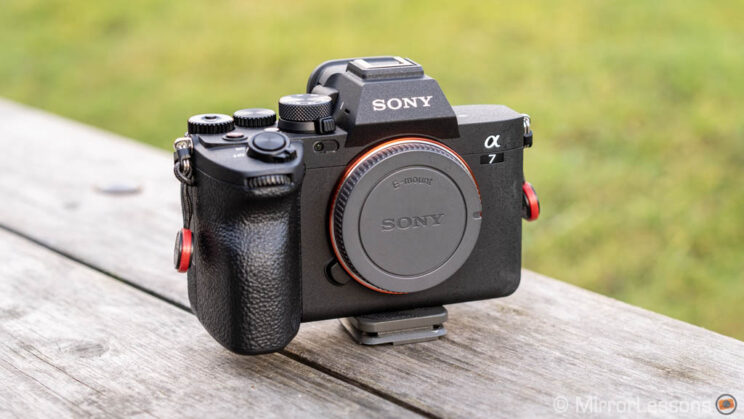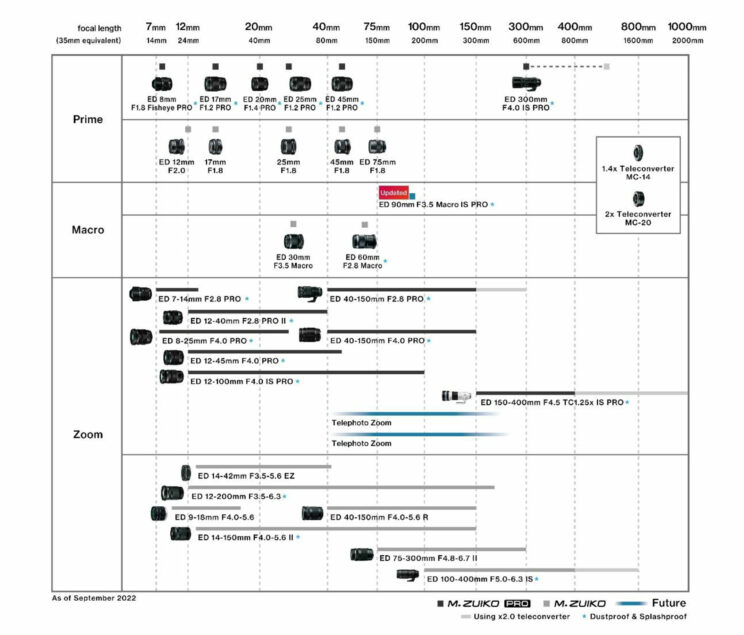This was a rich week with a lot of new cameras and lenses announced. We have the Fuji X-H2, Samyang’s cine lenses with autofocus, a new medium format camera and more!
Fujifilm X-H2
On the outside, it looks exactly the same as the X-H2S. On the inside, there is a new 40MP sensor, the highest resolution ever seen on APS-C.
The new camera shares the same AF system as the S model, including subject detection. It has a weather-sealed body and identical physical controls. Naturally, the higher megapixel count means the drive speed is lower, with a maximum of 20fps which comes with a 1.29x crop.
There is in-body stabilisation with a compensation of 7 stops (depending on the lens) but, unique to the X-H2, you also have the possibility of creating a 160MP file with the pixel shift multi shooting mode (the 20 shots have to be merged in post with Fuji’s dedicated software).
Video is also very impressive, with 8K and 6.2K up to 30p, 10-bit 4:2:2 and Prores HQ internally. You can read more about it in our comparison preview below.

Hasselblad X2D 100C
Hasselblad was the first to release a mirrorless medium format camera with the original X1D 50C in 2016. The mark II version only brought minor upgrades, whereas the new X2D is a major step forward.
The format is the same (44x33mm) but with a 100MP sensor. The latter, in addition to boosting a 64-25,600 ISO sensitivity, also features 294 phase detection points that cover 97% of the image sensor. This is a great improvement over the contrast detection AF of previous models. Hasselblad claims the new camera is 66% faster.
Another new addition is in-body image stabilisation with a rating of 7 stops.
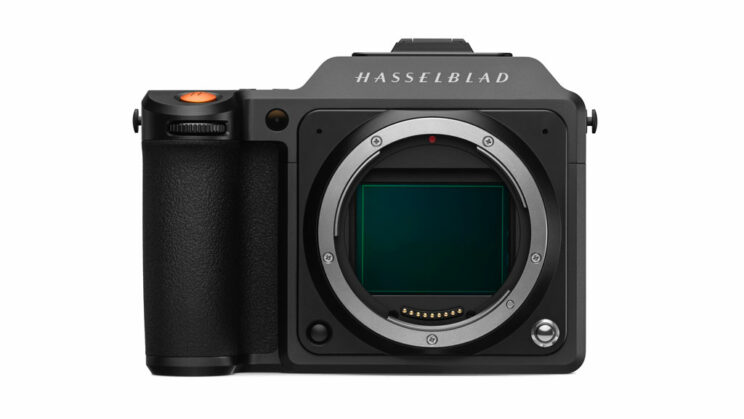
The X2D 100C is almost identical to the X1D models in term of design, but there are a few changes: it is a bit larger and there is a new info display on top. The camera weights 790g.
The rear LCD screen (2.36M dots) can be tilted up and down, another improvement over the older models. The viewfinder has 5.76M dots, a refresh rate of 60Hz and a 1x magnifcation.
There is one memory card slot for CFespress Type B cards, as well as 1TB SSD internal storage in the camera.
The X1D 100C will cost $8200, which is more expensive than its direct competitor the Fujifilm GFX 100S.
Hasselblad has also unveiled three new lenses, the XCD V 55mm F2.5, XCD V 38mm F2.5 and XCD V 90mm F2.5. They are three times faster than the previous versions concerning the AF performance, and the company will gradually update the other lenses. Remember that these are leaf-shutter lenses, as the body only doesn’t have a mechanical shutter.
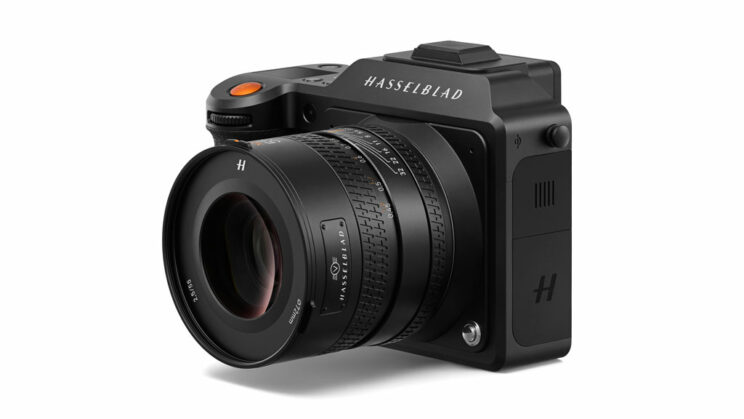
Fujifilm 56mm F1.2 WR R
Alongside the X-H2, Fujifilm has announced the 20-35mm F4 medium format lens for GFX cameras, and a new version of the popular 56mm F1.2 portrait lens.
The new version has an updated optical design, a new AF motor and is weather-sealed. The lens will be available in late September 2022 for $1000.
- 13 elements in 8 groups
- 2 aspherical and 1 ED elements
- Min. focus: 50cm
- 11-blade aperture
- Filter thread: 67mm
- 445g
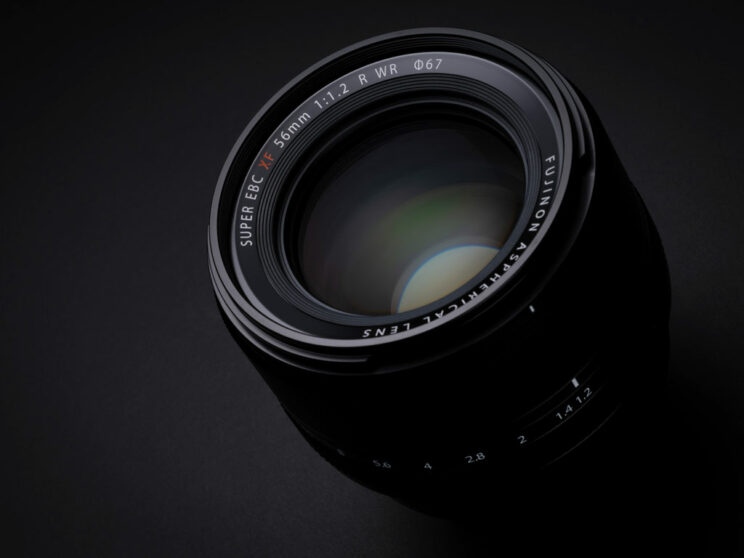
Panasonic S 18mm F1.8
The 18mm is the fifth prime lens with a F1.8 aperture designed for full frame L-mount cameras. It’s lightweight (340g), weather resistant and is designed to suppress focus breathing, as well as smooth aperture chages during video recording. No information about release and price yet.
- 13 elements in 12 groups
- 3 aspherical, 3 ED and 1 UED elements
- 9-blade circular aperture
- Min. focus: 18cm
- 67mm filter thread
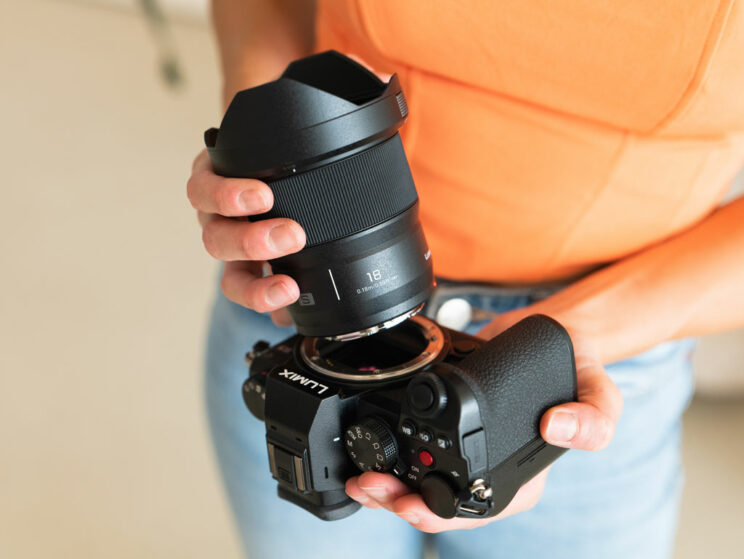
OM System M.Zuiko 90mm F3.5 Macro IS Pro
OM Digital Solutions has announced the development of a new macro lens, the 90mm F3.5 (180mm equivalent). It will feature optical stabilisation and will offer 2:1 magnification. As a member of the Pro series, it will also feature weather sealing.
OMDS also shared an updated lens roadmap, with two mid-range telephoto zooms also in the works. They will all arrive in 2023.
Samyang V-AF Cinema Lenses
Here is something quite innovative from Samyang. The Korean brand announced five new lenses: 20mm, 24mm, 35mm, 45mm and 75mm. While they are most likely based on the existing autofocus lenses designed for still photography, these new versions have a list of unique features designed for video-makers:
- light transmission of T1.9
- tally lamp at the front to indicate when the camera is recording
- same size and weight (280g)
- electronic connector at the front for compatible accessories (Samyang will talk more about these in the future)
- smooth focus transition with no focus breathing, with a maximum of 300˚ rotation angle (the ring can be customised via the Lens manager software and the custom switch on the barrel)
- standarised colour balance
- weather sealing
- and…
…the most interesting specification here is that these lenses have autofocus, with a linear STM motor that promises a quiet and fast AF performance. That’s why they are calling them the first cine lenses with autofocus. They certainly look interesting but it would have been nice to squeeze an aperture ring in as well. I also imagine the focus ring is focus-by-wire.
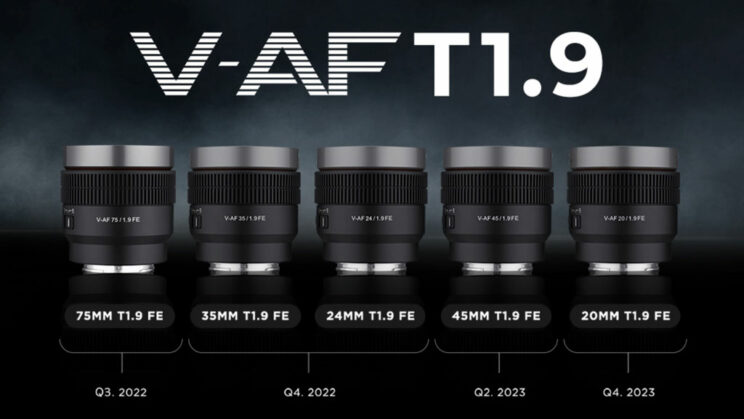
Samyang hasn’t released the official prices yet. The 24mm, 35mm and 75mm should be available by the end of the year. The others will come in 2023.
Sony A7 IV Firmware 1.10
A few weeks ago, Sony brought out the latest firmware for the A7 IV because of an unspecified problem. Now, it’s back.
What’s nice is that you can update the camera with the SD card, rather than downloading the updater software and connecting the camera to the computer.
But, and it’s a big but, you need to make sure you’re running version 1.05 before making the update. If your software version is older than 1.05, update to 1.05 first, then update to 1.10. Follow the instructions on the Sony website carefully.
